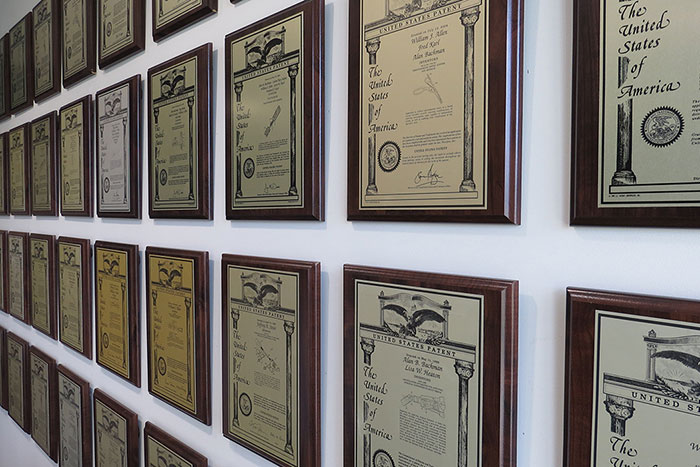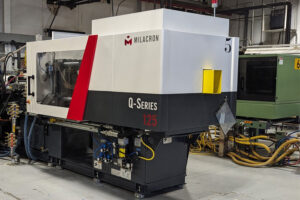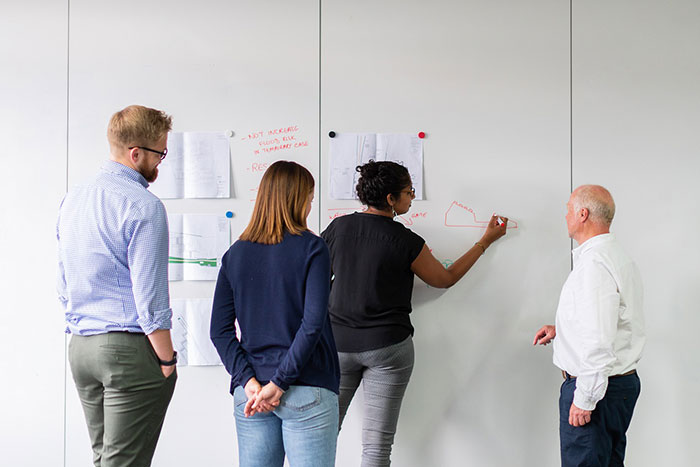
Do you have an idea but are uncertain how to patent that idea? You are not alone. Navigating the world of patents is not easy and can be incredibly frustrating and time-consuming. To help you get started, we put together this ultimate guide with answers to common patent questions. This guide does not take the place of sound legal counsel, and we strongly recommend consulting an attorney before pursuing any patent application.
What is a patent?
A patent is the grant of property rights, by the federal government, to someone for a specific time. It protects your invention, preventing anyone other than you, the inventor, from reproducing, altering, or selling it while the patent is active. In other words, it protects your invention from being stolen and prevents someone from making money off of your idea. If someone does violate your rights, you can take legal action against them. In the United States, the United States Patent and Trademark Office (USPTO) grants patents to inventions that meet specific criteria.
What can you patent?
You can patent anything that falls into one of these categories:
- Process or method
- Machine
- Manufactured article
- Composition (such as a pharmaceutical drug)
- Variety of plant
If your idea does not fall into one of the above categories, you may not need one. For example, if you developed a website, service, or mobile app, those things are not patentable. You also can’t patent things like naturally occurring substances or mathematical formulas. Some additional requirements include: it must be novel (new), useful, and not obvious.
When inventors come to us with their idea, we generally ask if they have begun the patent process. Before you start product design, sit down and ask yourself if your idea a. falls into one of the above categories and b. if it is a new idea. Even if you think you have a new idea, it may not be. A detailed patent search is your next step, which we will cover later in this guide.
What are the different types of patents?
There are three types of patents: utility, design, and plant. Each of these has specific criteria and provisions. In design and development, we only deal with the first two types.
Utility patents
These are the most common type granted to inventors of a new manufacture, process, composition, or machine. Your idea also qualifies for a utility patent if it improves upon an already existing manufacture, process, composition, or machine. They cover everything from manufactured goods to technical processes to chemical compounds.
There are two subsections of utility patents: business method patent and software patent. Business method patents are for a new way of conducting business. An example of this is Amazon’s “1-click shopping” option. Software patents are for new types of software that pass the “machine or transformation” test. Both subsets can be difficult to obtain as they fall under the “abstract idea” umbrella.
Design patents
Design patents are commonly seen in industrial design and given to those who invent a new aesthetic product design. The design can include a shape, configuration, or nonfunctional part, but it must not be able to be separated from the object it is on. However, a design patent only protects the object’s appearance, not function or features. Those instead are covered under a utility patent.
Plant patents
Plant patents are awarded to persons who invent a new type of plant. To qualify, the plant must be asexually reproduced, cannot be a tuber propagated plant, such as a potato, and not discovered in an uncultivated state.
How long does a patent last?
Unlike copyrights that can last for decades and trade secrets that last indefinitely, patents generally last for twenty years or less. The type of patent you hold does affect how long it is enforceable. Utility and plant patents last twenty years from the effective application filing date. However, a design patent lasts for fifteen years from awarded date.
The filing date also matters. Utility patents filed on or before June 8, 1995, have a patent term of seventeen years. Design patents filed on or before May 12, 2015, have a fourteen-year term. Keep in mind to maintain a patent active you must pay maintenance fees at the three, seven, and eleven-year marks. If these fees are not paid, then your patent is null.
How do you perform a patent search?
First, you need to decide if you want to perform the search yourself or if you want to invest in paying a qualified attorney to search for you. If you decide to pay someone else, the costs can be hundreds to thousands of dollars. Depending on how complex your invention is, this may be worth the money.
You can, of course, perform your own search for free using the USPTO’s website, but it may not be as straightforward as it seems. This is because they list every patent going back to the 1700s. Nuances, like changes in terminology, can affect you perform your search. Be wary of solely relying on Google’s patent search as it is not a perfect system either. Luckily, we break the tutorial down for you:
- Come up with a list of terms that describe your invention.
- Go to the USPTO’s classification system index and determine which class or subclass each of your terms falls under.
- Verify the relevancy of each class you came up with in step 2 by entering each classification into the USPTO’s classification schedule database and cross-checking against its definition.
- Search for the class under the PatFT database and retrieve all relevant patents, documents, and images related to that class.
- Review each patent in-depth for similarities between your invention and theirs. Make sure you review all drawings, the specifications, and the claims.
- Repeat steps 4 and 5 in the AppFT database. Again, remember to review all documents, sections, and drawings carefully.
- Do a keyword search of the terms you came up with in step 1 in the PatFT and AppFT databases, to cover any items you may miss during your previous searches.
How do you apply for a patent?
Before we get started, know that patents are territorial, meaning you must reapply in each country where you want your invention to be protected. Each country has criteria, requirements, and application process. Here we will cover the application process in the United States.
As we previously mentioned at the start of this guide, in the United States, the United States Patent and Trademark Office (USPTO) issues patents. To apply for one online, you must do so through their electronic filing system, EFS-Web. There are several documents needed, depending on the invention type and complexity. At the very least, you need:
- Specification – The specification is a detailed written description of your invention and how it works. It needs to be written well enough that a person with similar knowledge and background could recreate your invention.
- Claims – Claims define in specific legal language what your invention does. These are the only part of the patent that is enforceable.
- Drawings – These are drawings that detail your invention and how it works. They must reference all elements defined in the claims section.
Before filing your application, have all your research completed and documents ready. If all documentation is not complete or completed incorrectly, your application will most likely be rejected. Other reasons for rejection include insufficient detail or the invention being too obvious. This is where a patent attorney can come into play to help you avoid being rejected or assist you in altering your application to align more with what’s required. Since the claims require extremely specific writing, it is easy to trip up on this aspect of the application.
What is a provisional patent?
Provisional patents do not exist however, you can file a provisional patent application. This legal document secures you a filing date and thus patent rights while you work on and finalize your invention. It does not mature into a full-fledged patent unless you file a regular patent application within one year. Commonly referred to as “patent pending” provisional patents are granted for a year and expire after that year is complete.
Provisional patents are not full patents, and you cannot submit a provisional patent application instead of a formal patent application. Unlike regular patents, provisional patents are not examined and therefore do not incur the same fees, offering a low-cost option that can buy an inventor time. Furthermore, they do not disclose your invention to the public, so if development stalls, you do not risk having your idea stolen by someone else.
How much does a patent cost?
Depending on the complexity and type of invention, costs can vary widely. USPTO filing fees are required for filing and maintaining your rights throughout the patent lifetime. Filing fees can vary, but you can check the current fee schedule on the USPTO website. There are also attorney fees to consider varying from a few thousand to tens of thousands of dollars. You can go through the process without an attorney, but we strongly advise against it. Navigating the patent landscape is a long and arduous process. Without the correct knowledge and tools, you could find yourself lost along the way. A patent attorney, in this instance, is well worth the money.
Once you have your patent, you may need to pay maintenance fees to keep it active. This is the case for utility patents but not design and plant patents. Maintenance fees are paid at the three, seven, and eleven-year marks and can range depending on year mark and entity classification. If these fees are not paid your patent and rights to your idea will expire.
How long does it take to get a patent?
On average, it takes around twenty-two months to get a patent approved. There are instances where you can be eligible for the prioritized patent examination program, also known as Track One. Using this program your patent is awarded in twelve months, and in some cases, in as little as six months. However, there are some hangups to this program. For one, it is not free and can set you back between thousands on top of all the regular filing fees. Also, only 10,000 applicants are accepted into the program each year.
Need Invention Help?
About Synectic Product Development: Synectic Product Development is an ISO 13485 certified, full-scale product development company. Vertically integrated within the Mack Group, our capabilities allow us to take your design from concept to production. With over 40 years of experience in design, development, and manufacturing, we strive for ingenuity, cost-effectiveness, and aesthetics in our designs. Learn more about our product development services and see how we can help your next project.




